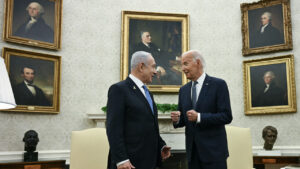
A The results of the 44-day vote to elect the 543 members of the lower house of parliament, called the Lok Sabha, in seven phases should be announced on June 4.
Here are some essential points about elections in India that involve more than 10% of the global population:
Main candidates
Prime Minister Narendra Modi is seeking a third consecutive term against a broad but fragile alliance of more than 20 opposition parties that has not yet named its candidate to head the Government.
Most polls predict Modi’s Hindu nationalist Bharatiya Janata Party (BJP) to win comfortably after two landslide victories in 2014 and 2019.
The main opposition party, Congress, which has ruled almost uninterruptedly for decades, now dominates only three of India’s 28 states. Party leader Rahul Gandhi – son, grandson and great-grandson of heads of government – was temporarily suspended from Parliament after being convicted of defamation.
In addition to several disputes, the opposition has experienced judicial investigations assessed as neutralization actions by Modi.
The investigations also provoked a reaction from the United Nations High Commissioner for Human Rights, Volker Türk, and human rights organizations, who consider the elections to be biased.
Duration of elections
The elections last more than 40 days given the size of the country and the logistics to allow the 969 million registered voters to vote.
Voters in the 28 states and eight federal territories will vote at different times. While some states vote in one day, in others voting lasts longer, such as in Uttar Pradesh – the size of Brazil and with 200 million inhabitants – where going to the polls lasts seven days.
The Electoral Commission must certify the existence of the possibility of voting within a radius of two kilometers for each voter, which involves around 15 million employees. In 2019, one of these teams traveled more than 480 kilometers over four days so that a voter could vote in Arunachal Pradesh.
Elections after independence from the British (1951-1952) lasted almost four months and in 1980 just four days. In 2019, voting took 39 days.
‘Vetoed’ themes
Caste and religion are two of the themes avoided, in theory, by the parties, but which in practice define a large part of the electoral strategy.
The Electoral Commission recalled, in March, that “one should not appeal to voters’ feelings of caste or community”, indicating that comments likely to generate tension between religious or linguistic groups, as well as propaganda that uses temples or other places of worship.
India has more than a hundred languages, practitioners of all the world’s main religions and a Hindu majority of almost 80%, with a mosaic of castes organized in a hierarchical system.
Security operation
Tens of thousands of federal security forces, normally on duty at the country’s borders, are deployed alongside state police to prevent violence and transport election workers.
Previous elections have been marked by clashes, especially in the eastern state of West Bengal.
Also Read: Thousands at rally in India’s capital criticize Modi ahead of elections

Download our free App.
Eighth consecutive year Consumer Choice for Online Press and elected product of the year 2024.
* Study by e Netsonda, Nov. and ten. 2023 product of the year – pt.com
Source: https://www.noticiasaominuto.com/mundo/2542746/india-vai-a-votos-a-partir-de-6-feira-e-ate-junho-o-que-esta-em-causa


